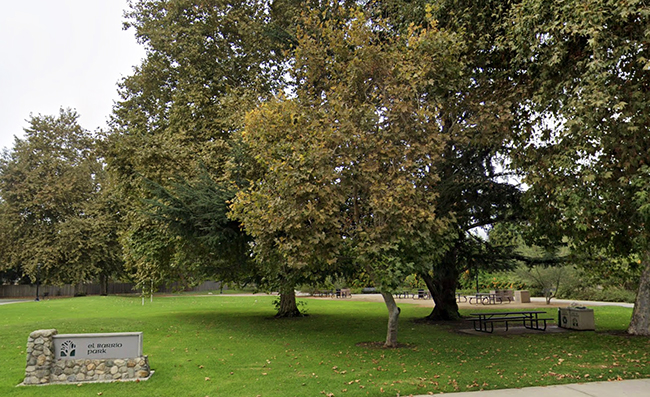Readers comments 3.8.13
City not swayed by threat
Dear Editor:
As reported recently in the Claremont COURIER, the city of Claremont has received several requests seeking to obtain copies of documents related to the city’s potential acquisition of the water system in Claremont.
Documents that are either produced or received by the city are generally subject to the California Public Records Act (PRA). Like all requests the city receives for copies of documents and correspondence, the city has responded to these requests in accordance with state law.
This specifically applies to the city’s response to the recent public records requests submitted by the Claremont COURIER and by the northern California advocacy group mentioned in the article. As the article correctly points out, this particular group is also seeking copies of correspondence the city may have received from certain Claremont residents, referred to as “activists.” The reference made by the advocacy group stating that the city has violated the Public Records Act is completely inaccurate.
The city of Claremont will continue to provide documents to any individual or group in accordance with state law.
Last, the article indicates that the advocacy group is threatening legal action against the city if we do not meet each of their demands and timeframes.
The city of Claremont will continue to comply with every provision of the Public Records Act, and the city will not be swayed by the threat of legal action.
Larry Schroeder
Mayor, Claremont
Visual pollution
Dear Editor:
It’s been several weeks now and I have tried very hard to learn to love the new monument signs at the Old School House, but I can’t do it.
I completely understand the desire of the merchants to have some signs with their names visible from the street, but what we have now looks like a leftover from Halloween and that gets in the way of my reading any of the text.
Why couldn’t we have had 2 shorter signs with the same pastel orange as the Citibank sign, and the same background color? Why do the names have to be a jumble of sizes, fonts and colors with a minimal border around the words? All of this makes the sign very hard to read.
Why not use the same font and color for all the text? Isn’t the point to make it easy for people driving by to read?
A lot of people worked hard to try to preserve the OSH and to make sure it was renovated in keeping with its history and with Claremont values.
These signs seriously interfere with those goals and provide an object lesson in what can go wrong when you allow large signs without sufficient restrictions on design.
I may be in the minority, but to me these signs seem to create visual pollution without achieving their advertising goals very well, and to move the city toward looking like every other town.
I hope we can rethink how the rules should be applied.
Sue Schenk
Claremont
Pining away in Claraboya
Dear Editor:
I read with bemused interest the plight of those poor folks in the Claremont Club area attempting to save their pine trees. Frankly, they are more than welcome to them.
However, if the city is determined to rid itself of some pine trees, allow those of us in Claraboya to make a suggestion. Take ours!
We have begged the city to remove those destructive, messy fire hazards for years with no success. We are happy to make the sacrifice and come to the rescue of the Club neighborhood.
Bruce Langford
Claremont
Restricting voters’ rights
Dear Editor:
Strike down parts of the 1965 Voting Rights Act? This, unfortunately, is not amazing to me. With the unbelievably racist bile spewed by some members of our political right in the past 4 years, it’s all too predictable.
In the past 2 years, 41 states have passed 180 laws to restrict voter registration; the president of our country has been called an “ape,” a “Half-rican,” and many other sick epithets; and one of our Supreme Court “justices” calls the Voting Rights Act “a perpetuation of Black entitlement.”
When did the availability of voting become an entitlement? Maybe “Justice” Scalia should trade in his black robe for a white one with a hood.
The idea of striking down what many historians believe to be the single most important piece of legislation passed in the fight for Civil Rights is unconscionable. What makes it worse is that many of the people who are espousing this actually claim to be Christian.
What a travesty. In the spirit of Medgar Evers,
Dan Kennan
Claremont
Freedom and safety
Dear Editor:
Leslie Watkins’ letter to the editor (Friday, March 1) is hypercritical of a previous letter submitted by Ellen Taylor (Saturday, February 23), which addressed the issue of gun violence in America and encouraged legislative action. The letter expresses Watkins’ opinions forcefully, but ignores the essential points of Ms. Taylor’s letter.
Watkins berates Ms. Taylor for wanting “all of us” to give up “our rights,” and for not realizing that “the bad guys” with guns would thereby gain an advantage over “the good guys.”
Watkins criticizes Ms. Taylor’s proposals for their “head in the sand” lack of foresight, courage and trust in her fellow man.”
Along the way, Watkins totally disregards the findings of current opinion surveys on issues related to gun violence, and suggests that Ms. Taylor would have sided with the monarchy in the Revolutionary War.
There are several problems here, beginning with the issue of “our rights.” The Second Amendment states: “A well regulated Militia, being necessary to the security of a free State, the right of the people to keep and bear Arms, shall not be infringed.” This is an unusual sentence structure. The first clause, known as the preamble, makes a point of explaining exactly why the right to keep and bear arms was considered necessary back in the 1780s. This was related to disagreements that were not yet resolved about the risks and benefits of maintaining a standing army.
It is reasonable to wonder if the clearly-stated reason for the Second Amendment still applies in the 21st century. This debatable question might have to be reexamined by the Supreme Court.
In the meantime we have some major public safety issues to consider. That is what Ms. Taylor’s letter was about, despite Watkins’ diversions.
We have over 300 million guns in the United States, far more than any other country. And we have the very highest “death by gun” rate of any developed country in the world. Coincidence? Many objective Americans think not! And yet the number of increasingly lethal guns continues to increase. So, we have to wonder, would having 400 million guns really make us safer and more free? How is that possible?
Ms. Taylor’s letter encouraged a reasonable and democratic approach to stemming the tide of gun violence. Responsible proposals include universal background checks, bans on sales of certain military weapons and limits on ammunition magazine capacities.
Whose “freedoms” would be seriously diminished by improved regulation? Cars also present safety concerns. So we have enacted hundreds of laws and regulations that serve to keep us safer, including registration, insurance requirements and specific rules defining what is “street legal.” Is that an egregious sacrifice of our rights?
Where should we draw the line? That is the essential question. Should we all be able to possess atomic bombs? Why not? After all, atomic bombs don’t kill people; only people kill people.
“Bad guys” with atomic bombs might pose a danger, but lots of “good guys” with atomic bombs would keep us all safe. Right? No need to infringe on anyone.
Let’s try to be responsible and honest about this. Sometimes the greater public interest, the “general welfare” of our entire population, has to supersede the strident imperatives of the simple right-wing mantra, “Don’t tread on me!”
Our perpetual challenge is to find and maintain the optimal balance of freedom and safety.
Dave Nemer
Claremont








0 Comments